Bloch MB 210 Early

Azur FRROM, 1/72 scale
S u m m a r y : |
Catalogue Number: |
Azur FRROM Kit No. FR0055 - Bloch MB 210 Early |
Scale: |
1/72 |
Contents & Media |
Five dark grey sprues, a clear one, a small photo-etched fret and a 16-page folded colour A5 instruction booklet |
Price: |
£39.99 EU Price (£33.32 Export Price) plus shipping available online from Hannants |
Review Type: |
First Look. |
Advantages: |
Terrific quality moulding, excellent interior and surface detail, great instructions and good decal choices. |
Disadvantages: |
None noted. |
Conclusions: |
This looks to be a great kit, well detailed, with interesting decal choices and the promise of later examples to follow. It was a significant, if dated, piece of French weaponry and is highly recommended to those of you with a penchant for this era and nation. I, for one, will enjoy the build, probably in conjunction with the Heller MB200.
Recommended. |
Reviewed by
Graham Carter

Another one of those mid-1930s French airplanes that only a mother would love, the Marcel Bloch 210 was a development of a floatplane design but fitted with retractable undercarriage. It bore a passing resemblance to its predecessor, the MB200, which has been released by KP and Smer this century.
The four-man bomber was the most prolific bomber in the Armee de l’Air when WWII broke out but was seriously obsolescent and did not last long, although the invading Germans did second around 17 of them for training and communications.
The aircraft was predictably released by Heller (1967), and re-released by Smer in 1990. I have this kit and it shows its age and the simplicity of those early Heller moulds, but builds on Britmodeller and Marquette72 indicate that a pretty reasonable replica could be produced given sufficient time and skill. This is now no longer a chore as Azur Frrom has produced a technologically superior kit in all respects, relegating the older ones to the collector or plastic masochist's market.
The sample came without a box, as Giles Fontaine (the Azure Frrom boss) explains in his accompanying letter, a hiccup in printing had occurred. I assume the kit will be in the usual strong top-opening affair and inside is the familiar resealable clear bag containing five dark grey sprues, a clear one, a small photo-etched fret and a 16-page folded colour A5 instruction booklet.
Oh, and a tiny 3G printed pair of exhausts hidden among the sprues in its own zip-lock bag.
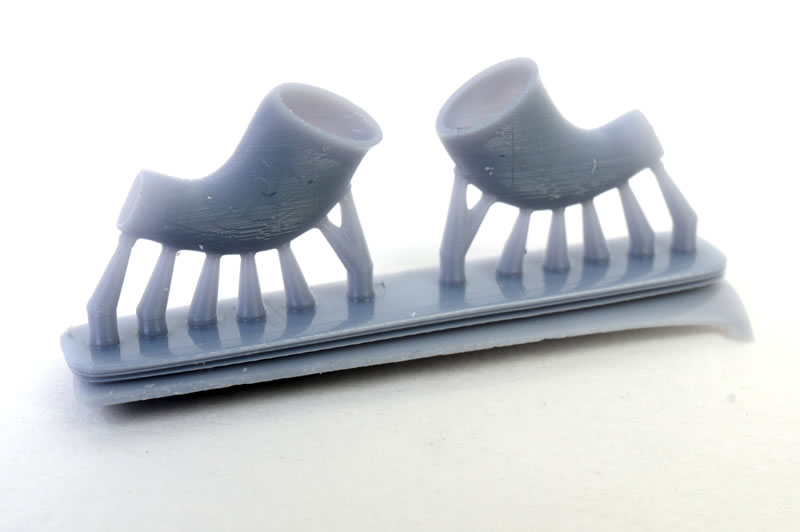
The parts are well-moulded with great surface detail, highlighting the metal strengthening bars(?) on the fuselage and wings, a feature of these 1930s French metal multi-engined aircraft.
The transparencies are clear and packed in their own bag to prevent scratching.
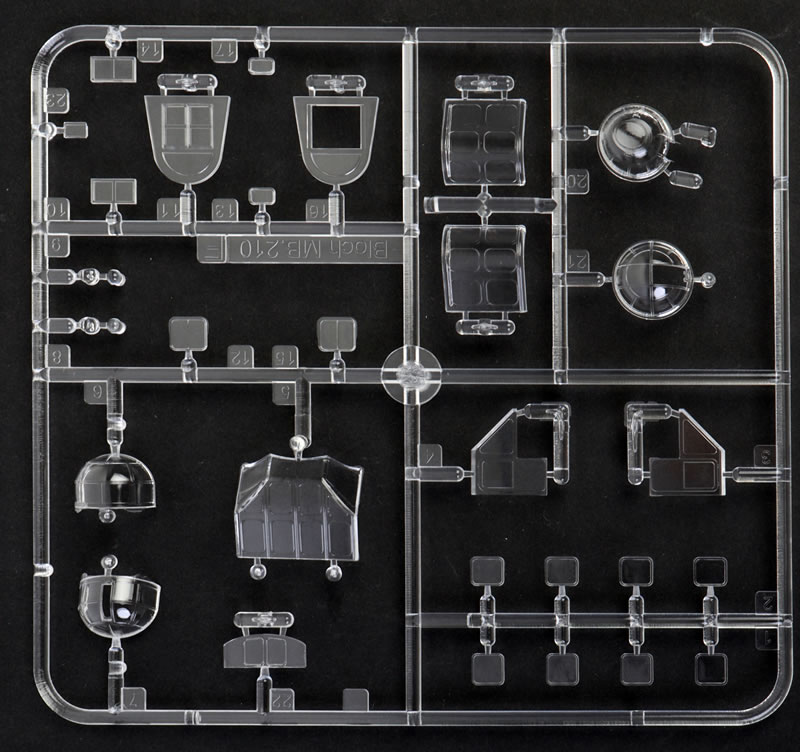
Gates are small and should be easy to clean up but take care with the ones on the wings as they do touch on the leading edges. There are a few small surface swirls in the plastic but closer examination showed that these will not affect the painted finish.
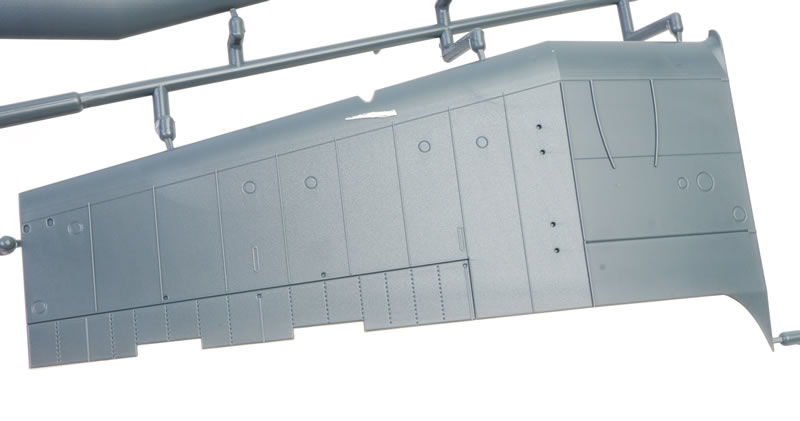
The interior and engine are fully detailed and will bear careful painting as the former can be seen through the extensive windows ( or should I say fenestration) in the fuselage. There will be some careful masking of windows as these are attached from the inside. The fuselage exterior structure is made up of six pieces to allow for the square shape to be accurately replicated. This will also require care as there are no locating pins/holes but there are narrow moulded ledges to help alignment.
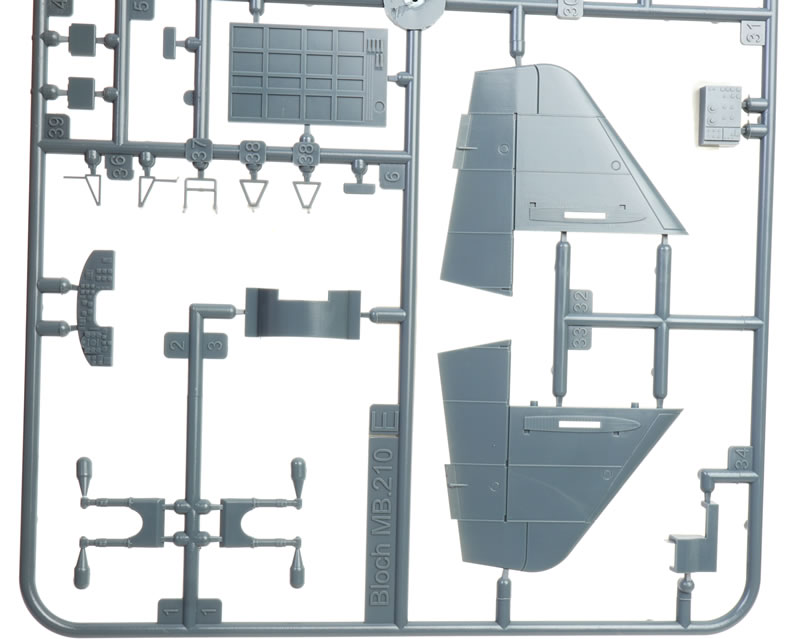
The instructions are clearly drawn, with colours called out in each step. Photo-etch is used for some very fine detailing of seat bases and exterior doo-dads.
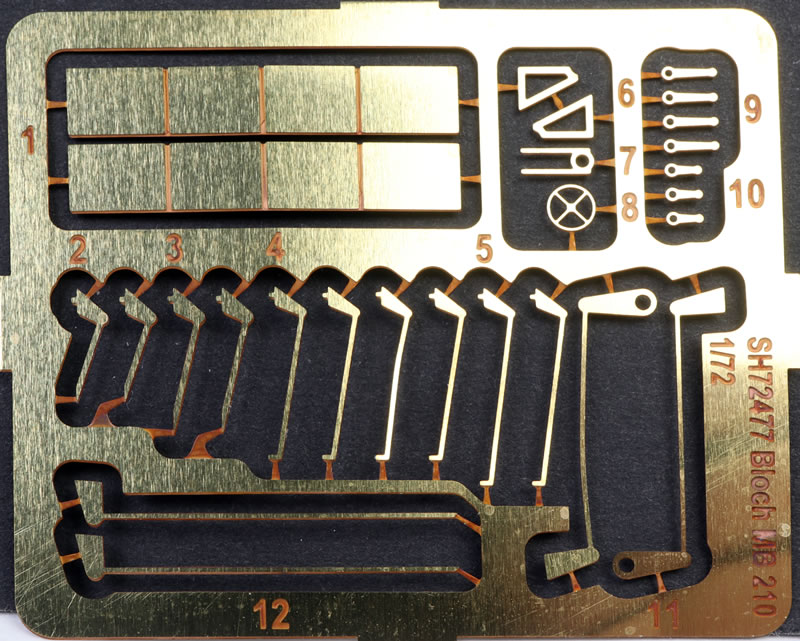
The engines exhibit some differences according to the decal scheme chosen so some decisions need to be made at steps 29-30. A vertiginous boarding ladder is added at the nose for the crew to mount the ten steps up to their positions.
Colours & Markings
Decals are provided fro three aircraft, all in overall French dark green with aluminium forward nacelles and cowlings. All have typically colourful unit markings and large white matricules - serials - under the wings. I assume that a later release of the kit will cover some of the wartime users of this plane.
The decals are well-printed on a mid-blue backing sheet to assist in finding the many white markings. Colour density is excellent as is register, and carrier film is minimal. The unit badges are colourful and perfectly printed.
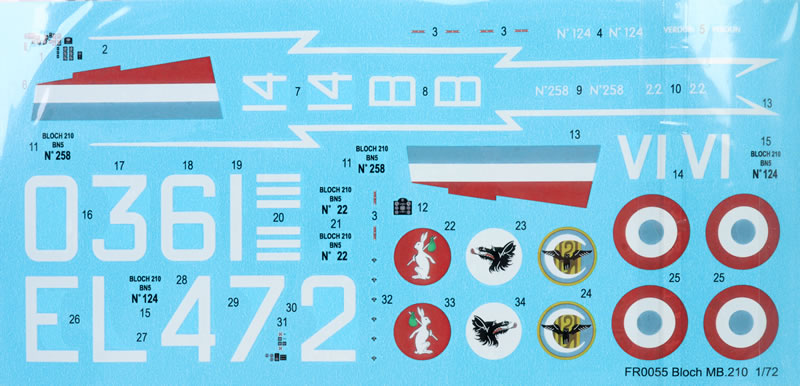
The choices are:
-
Nr.124 white VI matricule E471 of GB1/19 in July 1938, as found by German forces at la Rochelle, with a white lightning fuselage marking,
-
Nr.258 white 14/B matricule L210 of GB1/23 in 1938 at Toulouse, and
-
Nr.22 white III matricule E364 of GB1/19 in 1937, at Bordeaux.
This is a great kit, well detailed, with interesting decal choices and the promise of later examples to follow. It was a significant, if dated, piece of French weaponry and is highly recommended to those of you with a penchant for this era and nation.
Recommended
Thanks to Azur FRROM for the review sample.
Review Text Copyright © 2025 by Graham Carter
Images Copyright © 2025 by Brett Green
Page Created 29 January, 2025
Last updated
29 January, 2025
Back to HyperScale Main Page

|
